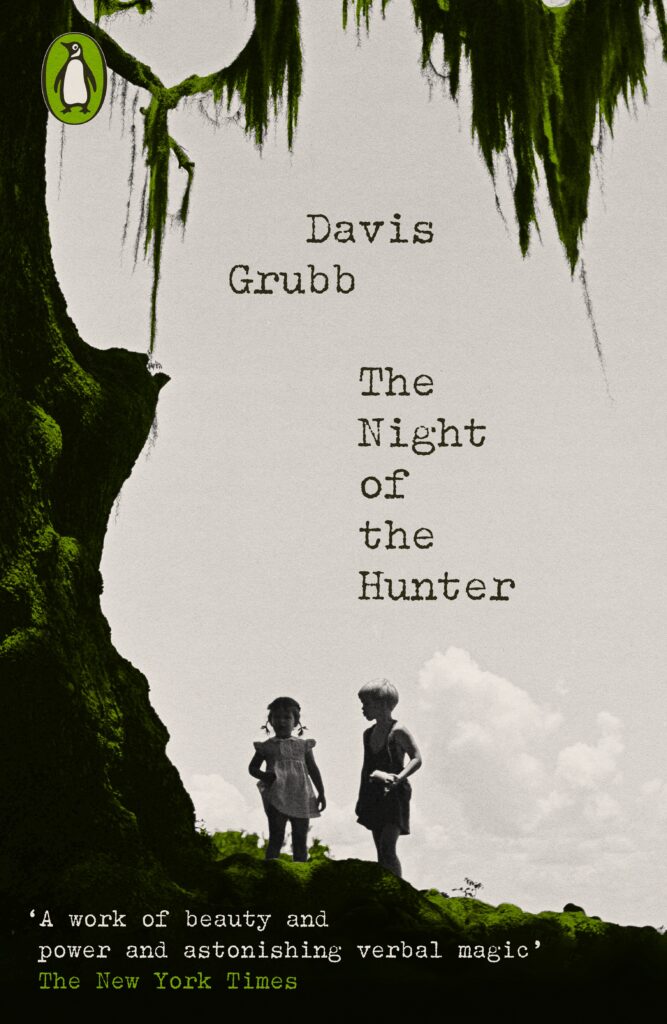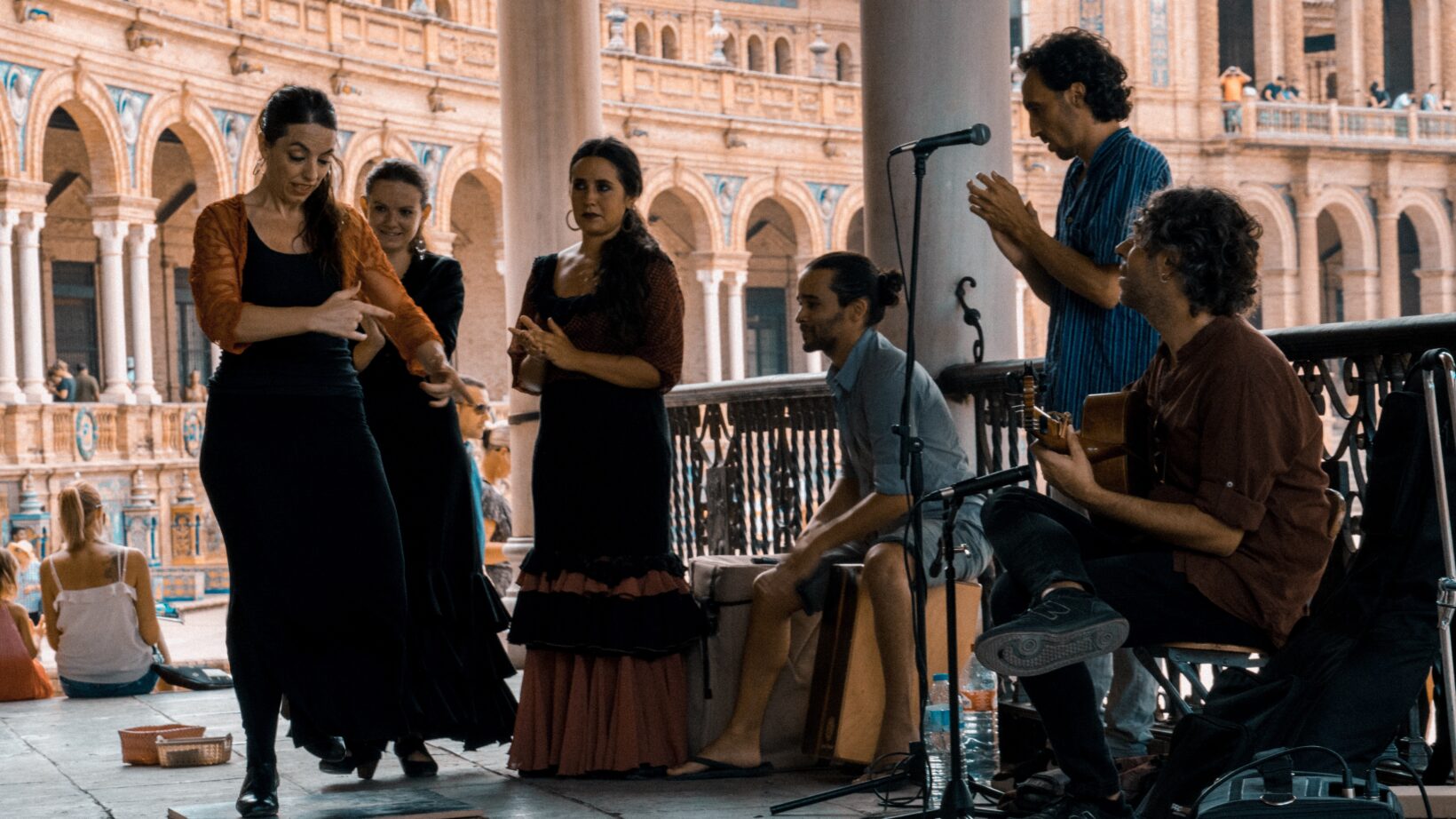The True Story Behind Davis Grubb’s The Night Of The Hunter, republished by Penguin Classics.

‘Not that you mind the killings! There’s plenty of killings in your book, Lord…’
So says the irrepressibly sinister, serial-killing preacher Harry Powell in Davis Grubb’s 1953 novel The Night of the Hunter. The character of Powell is ingrained in the minds of many due to Robert Mitchum’s powerful performance in the film adaptation of the novel two years later, scripted by James Agee, and directed by Charles Laughton, in the only film Laughton ever helmed.
Set twenty years earlier in the Depression-era Virginia of the early 1930’s, Powell’s self-justification of his homicidal ways by reasoning that the ‘killings’ in the Bible mean that God can understand the act of murder, places Grubb’s villain and his novel right at the heart of the Southern Gothic literary genre.
Gritty and infused with death and God-fearing foreboding in a harsh and evocative setting, the book’s inhabitants are enveloped by the brutality of both nature and of human nature. They die or survive at the mercy of Powell’s fake man of God, searching for his double-murderer (now executed) ex-cellmate Ben Harper’s buried loot, which inevitably puts Harper’s widow Willa and young children John and Pearl in treacherous peril.
Grubb’s novel was a bestseller, nominated for the prestigious National Book Award, and has long been seen as a classic. But many don’t realise that the character of Harry Powell was loosely inspired by a real serial-killer, who wasn’t a fake preacher as in Grubb’s creation. That true-life murderer was Harry Powers. Although that was an alias, the one he used while living quietly as a secondhand furniture dealer.
Powers’s real name was Herman Drenth, and he was born in the Netherlands, before emigrating to the US as a teenager in 1910. He also used several other aliases during his life, including ‘Cornelius Pierson’, the name he adopted while luring women into his murderous web. He did that by advertising in and responding to adverts in the lonely-hearts columns, seeking a new wife, although he was very much already married. Posing as a widower, he’d write that he was ‘longing for someone’ to take the place of his deceased wife ‘in my heart’, and added the incentive that any lady who entered his life ‘can have anything, within reason, that money can buy.’
This was in the years immediately after the Wall Street Crash of 1929, which triggered the Great Depression, and the largely rural Midwest and southern states suffered particularly badly in that unstable period of extreme poverty. Such an offer of generous long-term provision would have been very appealing to potential suitors. But of course, Powers had no intention of providing at all, only fleecing the women he ensnared, who certainly needed to have some means of their own to interest him. In fact, Powers had met his real wife Luella, the owner of a grocery store and a farm, through a lonely-hearts column. They lived in Quiet Dell, West Virginia.
Asta Eicher from Illinois disappeared along with her three children, Greta, Annabel, and Harry, in June 1931, after having corresponded with Powers. Despite trying, Powers was unable to defraud her of her savings, but managed to clear out much of her house and sell some of the contents. Another victim seeking a husband was Dorothy Lemke from Massachusetts, whom Powers relieved of $4000, which would have a spending power of about $80,000 today.
Police in Illinois began investigating the disappearance of the Eicher family that August, and Powers/Pierson was caught still emptying their home. But perhaps Powers should have first removed the love letters he’d written to Asta, as officers found them, leading to his arrest. The house he shared with his real wife Luella in Quiet Dell was then searched, and four rooms were discovered under the garage, which Powers had adapted into his killing chamber. Several incriminating items were found there, and further inquiries led to a local boy revealing that he’d helped Powers dig a ditch in the adjacent garden.
When that ditch was being excavated, the macabre sight of the bodies of Asta, Greta, Annabel, and Harry Eicher, plus Dorothy Lemke, came into view. They had all suffered brutal ends- the females had all been strangled, while Harry’s head had been caved in by a hammer. Powers was almost certainly beaten up during his police interrogation by the disgusted and disturbed officers, although the official line was that he had fallen down the stairs. He also nearly became the victim of a lynch mob trying to drag him from the jail, and the venom of that crowd had to be aggressively and forcibly diluted by the police.
Powers confessed, and after a trial he was sentenced to death in December, and executed in March 1932, in Moundsville, West Virginia, where Davis Grubb was born and then lived. Grubb was twelve at the time of Powers’s hanging, and the notoriety of his murders and his end stayed firmly in the future writer’s mind. Twenty years later, Grubb used the evil Harry Powers as the starting template for the character of the amoral sham preacher Harry Powell in The Night of the Hunter.
A new edition of The Night of the Hunter by Davis Grubb will be published by Penguin Modern Classics on 13th July.
Neil Root’s crime novel Shadowside is published by Dime Crime Books, and he has published several true crime titles.





